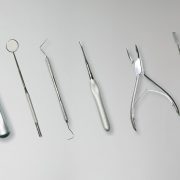Tooth numbering systems play a crucial role in dental practice, ensuring clear communication, accurate record-keeping, and effective treatment planning. A recent proposal introduces a modified system that addresses a significant limitation of existing notations—the inability to clearly document teeth undergoing hemisection, bicuspidisation, and root resection.
Challenges with Current Numbering Systems
- The Universal Numbering System (U.S.) and the Fédération Dentaire Internationale (FDI) system are widely accepted.
- Neither system accommodates tooth modifications such as hemisection, bicuspidisation, and root resection.
- Clinicians must rely on lengthy written descriptions to define remaining tooth fragments, increasing the risk of miscommunication.
Proposed Modifications for Precision
A new approach integrates simple codes into existing numbering systems to indicate retained tooth/root segments:
- Hemisection: Retained mesial root (M) or distal root (D) is appended to the tooth number (e.g., 30M in Universal or 4.6M in FDI for mandibular right first molar).
- Bicuspidisation: Both mesial and distal roots are individually labeled (e.g., 30M and 30D in Universal, 4.6M and 4.6D in FDI).
- Root Resection: Maxillary molar roots are identified as palatal (P), mesio-buccal (MB), or disto-buccal (DB), noted as 3MB,P (Universal) or 1.6MB,P (FDI).
Implications for Dental Practice
- Improved Communication: Reduces ambiguity in documentation and interdisciplinary collaboration.
- Better Patient Management: Facilitates accurate treatment planning and long-term follow-up.
- Seamless Integration: The system maintains compatibility with existing Universal and FDI notations while adding clarity.
This enhanced notation ensures a standardized method for documenting altered tooth structures after surgery, streamlining communication among dental professionals and enhancing patient outcomes.
By incorporating a minor but impactful modification, the proposed numbering system provides a more precise and efficient method for identifying teeth post-hemisection, bicuspidisation, and root resection. As dentistry evolves, adopting such refinements will contribute to improved patient care and streamlined clinical workflows.
Source: International Dental Journal




















Comments